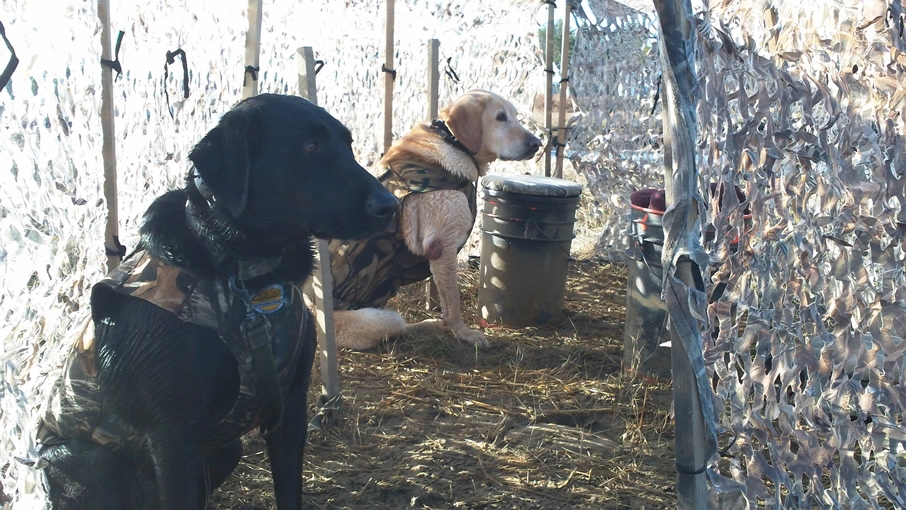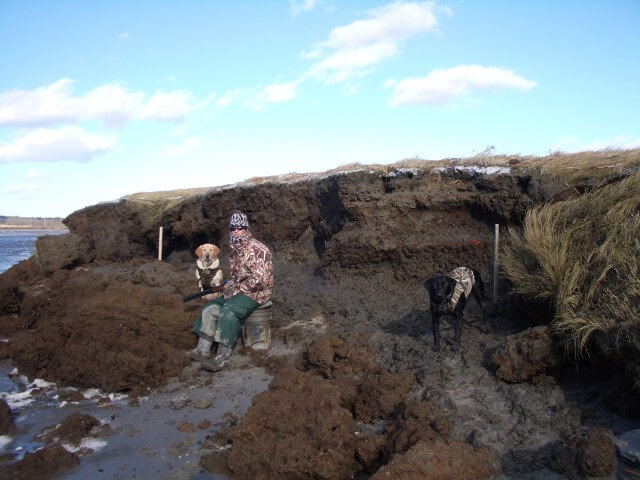
Training or hunting with more than one dog has its benefits and its issues. Whether it’s two of your own dogs or your dog and that of a friend, be sure you consider it carefully.
For a young lab, working with an older experienced retriever of any breed can be a great teaching aid. You’re not just trying to ‘explain’ what you want to your dog to do; you have another dog to ‘show’ him what you want. Be sure the older dog is good at what he does, is not sloppy, and is well behaved. If not, you can be teaching just as may bad habits as good ones. If a friend is after you to train or hunt your dog with his, and you don’t think you or your dog are ready, say thanks but no thanks. If a pro or your ProCoach suggests it and he/she will be there with you, go for it.
I think it’s especially good for introducing a pup to water and showing a young dog what is expected on basic retrieves. Labs love to imitate and they can be pretty selfish about things. Watching the older dog can stir enthusiasm in your dog; and now he’s not just doing the drill to please you, he’s doing it to satisfy his own urges. That’s not a bad thing at this point. I would use your lab’s favorite bumper because the thought of another dog going after his bumper will further encourage your lab when it’s his turn. Be sure your dog is on lead and cannot break while the older dog is doing his thing. You do not want this exercise to turn chaotic. Also be sure that when it’s your little guy’s turn, that the older dog is secure and will not break and ruin the lesson. Do not turn it into a competition.
I would not expect this two dog game to work well for more sophisticated lessons, like lining or hand signals.
Your dog is not going to recognize the nuance of the hand actions while he is watching the drill of the other dog. Two dogs together is more a monkey see, monkey do for big picture lessons so unless you really want to get into it, and/or you always hunt with two dogs I would keep it simple.

In some years, I have owned two dogs at a time; most recently, Ember and Cedar. For a while, it became more convenient for me to attempt to train both dogs together. But 90% of the time I train alone and controlling one dog while I worked the other turned into quite the fire drill. If my truck was right there and I could crate one at a time, that simplified things; but if I had to walk a distance to reach my training area, confusion ensued.
During that period, I also hunted them together. That brought a whole ‘nother set of issues for me. Cedar was a pretty passive dog and Ember is quite the opposite. When my boys were with me, we set up two blinds and separated the dogs which at times worked well. But Ember is also pretty vocal about another dog doing what she thinks is her sole right and responsibility. Another issue for me was insuring my group shot enough birds to give each dog ample and equal work.
On the flip side, it‘s very hard leaving one dog home; for both you and the dog left behind. I began hunting them together when Cedar’s working days were declining so my decision that it wasn’t worth it for me became a little easier to make. I went back to one at a time. I had a more relaxing hunt and Ember became a more disciplined hunter.
If it seems right for you, and especially if you own 2 retrievers, give it a shot; just be realistic about what transpires and react accordingly.